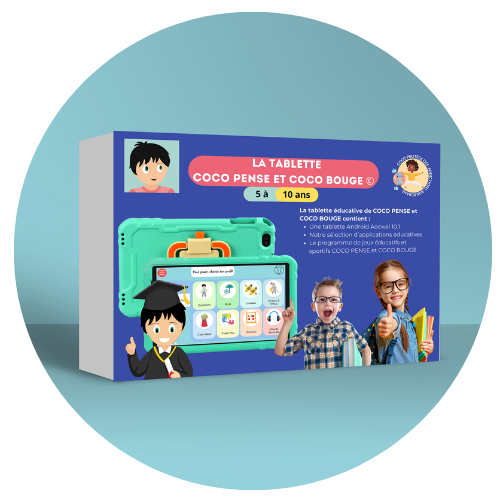Educational tools and apps designed specifically for children with Attention-Deficit/Hyperactivity Disorder (ADHD) play a crucial role in addressing their unique learning needs and challenges. ADHD, characterized by difficulties in sustaining attention, controlling impulses, and regulating activity levels, often presents obstacles to traditional learning methods. However, technology offers a promising avenue to engage and support these children effectively.
Tailored educational tools provide interactive and engaging experiences, helping children with ADHD stay focused and motivated while learning. By incorporating elements such as visual aids, gamification, and interactive exercises, these tools cater to different learning styles and capture the attention of children with ADHD more effectively than traditional methods.
Moreover, educational apps can be personalized to match each child’s learning pace and preferences, fostering a sense of autonomy and accomplishment. In an increasingly digital world, these tools not only enhance academic skills but also promote the development of crucial executive functions such as organization, time management, and problem-solving, empowering children with ADHD to succeed academically and beyond.
Understanding ADHD and Learning Challenges
Children with ADHD often face a myriad of difficulties in learning due to the nature of their condition. One of the primary challenges is maintaining sustained attention, as they frequently struggle to focus on tasks for extended periods. This difficulty with attention can lead to problems with absorbing and retaining information presented in traditional learning environments. Additionally, impulsivity and hyperactivity can further disrupt the learning process, making it challenging for children with ADHD to follow instructions, participate in classroom activities, and complete assignments.
Furthermore, organizational skills and time management may be underdeveloped, hindering their ability to plan and prioritize tasks effectively. These ADHD-related learning difficulties can significantly impact academic performance and self-esteem, highlighting the importance of tailored educational interventions and support systems to address the diverse needs of children with ADHD.
Benefits of Educational Tools and Apps
Educational tools and apps offer numerous advantages for children with ADHD, revolutionizing the way they learn and interact with educational content. These digital resources provide dynamic and interactive platforms that cater to various learning styles and preferences, promoting engagement and motivation among users. By harnessing the power of technology, educational apps captivate children’s attention through visually stimulating interfaces, gamified activities, and interactive features.
This enhanced engagement not only makes learning more enjoyable but also helps children with ADHD stay focused and attentive for longer periods, facilitating a more productive learning experience overall.
Enhanced engagement and focus
One of the primary benefits of educational tools and apps for children with ADHD is the enhanced engagement and focus they foster. Unlike traditional learning methods, which may struggle to maintain the attention of children with ADHD, educational apps offer interactive and dynamic content that captures their interest and motivates active participation.
Through gamification, multimedia elements, and interactive exercises, these apps create a stimulating learning environment that encourages sustained attention and concentration. By promoting engagement and focus, educational apps help children with ADHD overcome common challenges associated with attention deficits, enabling them to fully immerse themselves in the learning process and maximize their potential.
Personalized learning experiences
Educational tools and apps provide children with ADHD with personalized learning experiences tailored to their individual needs, preferences, and learning styles. These digital resources offer adaptive features that allow users to customize their learning environment, adjust difficulty levels, and access content at their own pace. By catering to the unique strengths and challenges of each child, educational apps promote a more inclusive and effective learning experience.
Whether through adaptive algorithms, progress tracking, or customizable settings, these apps empower children with ADHD to take control of their learning journey, build confidence, and achieve meaningful progress. Personalized learning experiences not only enhance academic outcomes but also foster a sense of ownership and autonomy, empowering children to become active and engaged learners.
Development of essential skills
Another significant benefit of educational tools and apps for children with ADHD is the development of essential skills critical for academic success and personal growth. These digital resources offer a wide range of interactive activities and exercises designed to target specific cognitive and academic skills, such as reading, math, problem-solving, and executive functions.
Through engaging gameplay, challenges, and real-time feedback, educational apps provide opportunities for children with ADHD to practice and reinforce these skills in a supportive and stimulating environment. By consistently engaging with educational apps, children with ADHD can strengthen their academic abilities, improve self-regulation, and develop essential life skills, setting a strong foundation for future success in both academic and personal pursuits.
Types of Educational Tools and Apps
Educational tools and apps designed for children with ADHD encompass a diverse range of functionalities tailored to address their specific learning needs. Interactive learning games engage children in dynamic and stimulating activities that promote skill development while maintaining their interest and attention. These games often incorporate elements of gamification and interactivity to make learning enjoyable and effective.
Time management and organization apps provide essential support in helping children with ADHD structure their tasks, set reminders, and track their progress, fostering independence and accountability. Moreover, mindfulness and relaxation tools offer techniques and exercises to help children manage stress, regulate emotions, and improve focus. Through mindfulness practices such as deep breathing and guided meditation, these tools empower children to develop self-awareness and emotional resilience, enhancing their overall well-being and academic performance.
Features to Look for in ADHD-Friendly Apps
When searching for ADHD-friendly apps, several key features can significantly enhance their effectiveness in supporting children with ADHD. Customizable settings tailored to individual needs allow users to adjust the app according to their preferences, learning style, and attention span, accommodating the diverse requirements of children with ADHD. Visual aids and clear instructions play a crucial role in facilitating comprehension and engagement, helping children better understand tasks and follow directions effectively.
Additionally, apps equipped with progress tracking and feedback mechanisms enable users to monitor their performance, track achievements, and receive timely feedback on their efforts. These features not only promote accountability but also provide valuable insights into areas for improvement, empowering children with ADHD to take an active role in their learning journey while building confidence and motivation.
Recommended Tools and Apps for Different Age Groups
For preschool and early childhood, interactive and intuitive apps like “Endless Alphabet” and “Sago Mini World” are highly recommended. These apps focus on fundamental skills such as letter recognition, vocabulary building, and basic numeracy through engaging games and activities designed specifically for young children. In elementary school, educational tools like “Khan Academy Kids” and “Prodigy Math Game” prove beneficial. They offer a wide range of subjects and interactive exercises aligned with school curricula to reinforce foundational concepts in math, reading, and science.
Middle and high school students benefit from apps like “Quizlet” and “Google Classroom,” which provide versatile study tools, collaborative platforms, and organizational features to streamline learning, manage assignments, and prepare for exams effectively. These age-appropriate tools cater to the evolving academic needs and cognitive development of students across different stages of their educational journey.
Parent and Educator Involvement
Parents play a pivotal role in supporting their children’s app usage by providing guidance, supervision, and encouragement. They can help select appropriate apps tailored to their child’s interests, learning style, and developmental stage, ensuring that the content aligns with educational goals and values. Additionally, parents can actively engage with their children during app sessions, offering praise, constructive feedback, and reinforcement to enhance learning experiences and promote responsible screen time habits.
Collaboration with teachers and educational professionals further enriches the app usage experience by facilitating communication, sharing insights, and coordinating efforts to address individual learning needs and goals. By fostering open dialogue and partnership between home and school environments, parents and educators can work together to maximize the benefits of educational apps and support children’s holistic development and academic success.
Accessibility and Availability
Accessibility and availability are crucial considerations when selecting educational apps for children with ADHD. Free apps offer a cost-effective solution for families seeking quality educational resources without financial constraints. They ensure equal access to learning opportunities for children from diverse socio-economic backgrounds. However, paid apps often provide more extensive features, personalized content, and ad-free experiences, enhancing the overall user experience and learning outcomes.
When choosing apps, it’s essential to consider compatibility with various platforms and devices to accommodate different preferences and technological ecosystems. Ensuring cross-platform support allows flexibility in usage across smartphones, tablets, and computers, catering to the diverse needs and preferences of children and families. By prioritizing accessibility and compatibility, parents and educators can maximize the reach and impact of educational apps, empowering children with ADHD to thrive in their learning journey.
Reviews and Recommendations
When considering educational apps for children with ADHD, reviewing user feedback and ratings offers valuable insights into app performance, usability, and effectiveness. User feedback provides firsthand accounts of experiences, highlighting strengths, weaknesses, and areas for improvement. By examining ratings and reviews, parents and educators can make informed decisions about app suitability and relevance to their child’s needs and preferences.
Additionally, seeking expert reviews and endorsements from reputable sources such as educational professionals, child psychologists, and special education organizations can offer further validation and guidance. Expert evaluations assess app content, pedagogy, and alignment with educational standards, helping users navigate the vast array of available options and identify high-quality resources that support learning objectives effectively. By incorporating both user feedback and expert recommendations, individuals can make informed choices that optimize the educational experience for children with ADHD.
Incorporating Apps into Daily Routine
Incorporating educational apps into daily routines requires thoughtful strategies to maximize their effectiveness while maintaining balance and boundaries. In schools, educators can integrate apps into lesson plans and classroom activities, aligning them with curriculum objectives and individual learning needs. Providing designated times for app usage ensures consistency and accountability while allowing students to benefit from interactive and personalized learning experiences.
At home, parents can establish clear guidelines and screen time limits to promote healthy technology habits and prevent overreliance on devices. Setting boundaries around app usage encourages children to engage in diverse activities, such as outdoor play, social interactions, and offline learning experiences, fostering holistic development and well-being. By striking a balance between technology integration and offline activities, families and schools can harness the educational potential of apps while nurturing healthy habits and routines for children with ADHD.
Monitoring Progress and Adjusting Usage
Monitoring progress and adjusting app usage are essential components of supporting children with ADHD in their academic journey. Tracking academic performance and ADHD symptoms allows parents and educators to assess the effectiveness of educational apps in addressing specific learning needs and challenges. Regular monitoring enables the identification of trends, strengths, and areas requiring further support or intervention, facilitating timely adjustments to app usage and instructional strategies.
Moreover, maintaining flexibility in app selection based on effectiveness ensures that children have access to resources that align with their evolving learning preferences and goals. By monitoring progress and remaining open to adapting app usage, parents and educators can optimize the learning experience for children with ADHD, promoting continuous growth, engagement, and academic success.
Educational tools and apps offer invaluable support for children with ADHD, addressing their unique learning needs and enhancing their academic journey. These resources provide interactive and engaging experiences tailored to capture attention, promote skill development, and foster independence. By incorporating features such as customizable settings, visual aids, and progress tracking, apps empower children to learn at their own pace while building essential academic and executive function skills.
As we continue to explore and utilize these resources, it is crucial to recognize the transformative impact they can have on children’s educational experiences and overall well-being. Let us remain committed to leveraging the potential of educational tools and apps, fostering a collaborative environment between parents, educators, and technology developers to ensure that every child with ADHD receives the support they need to thrive academically and beyond.




